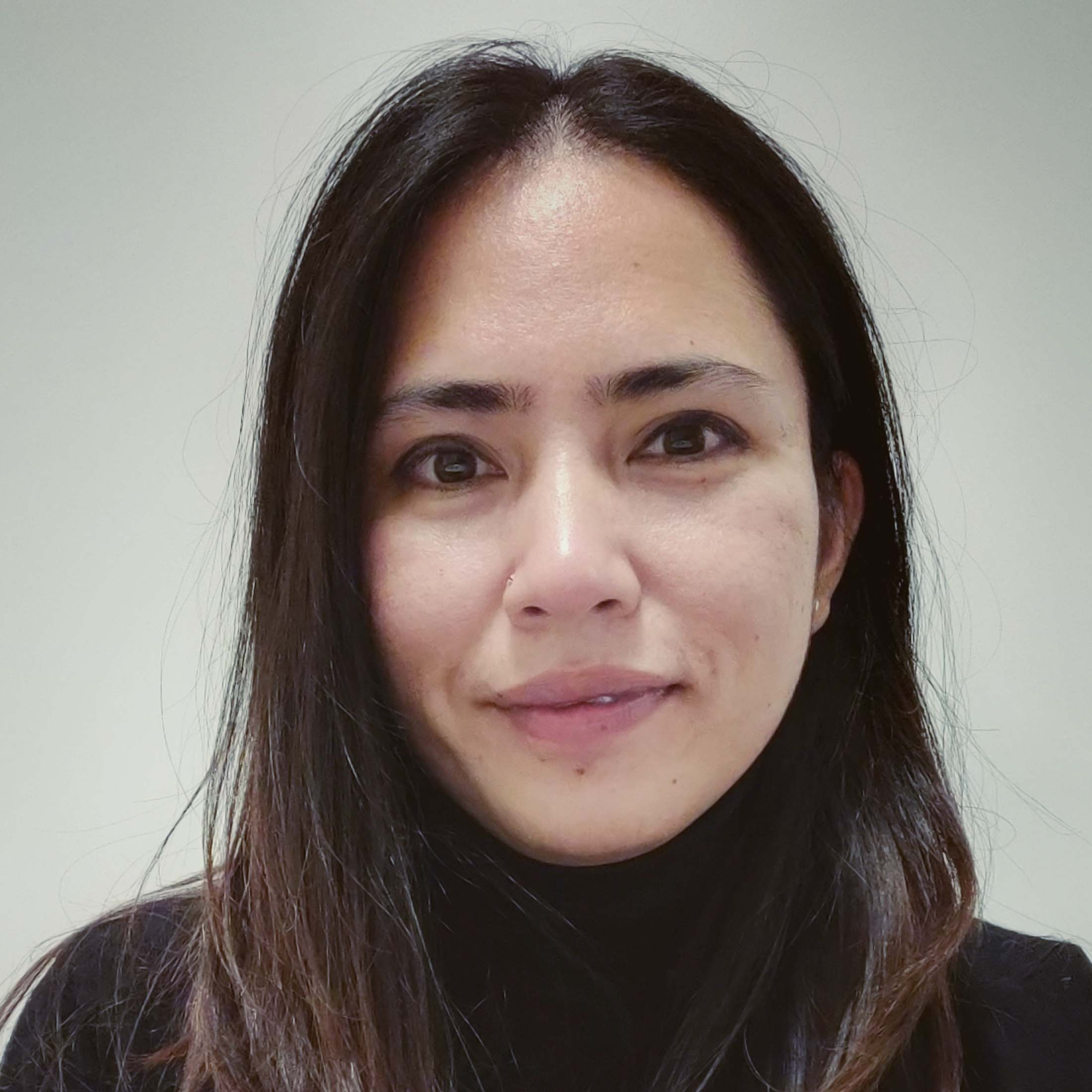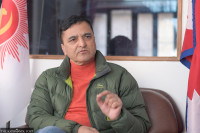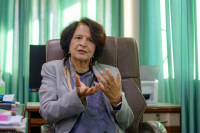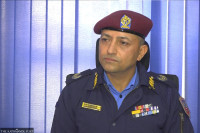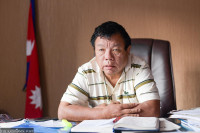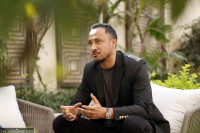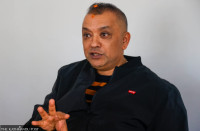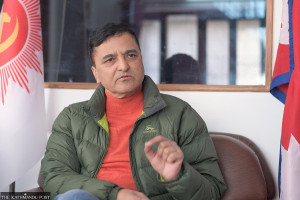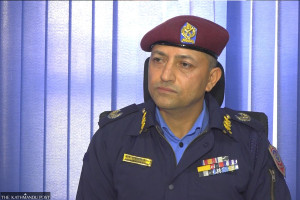Interviews
Evolving in a growing market
'A manager can’t be everywhere, micromanaging everything'
Alisha Sijapati
Since 1995, Rebecca Tadikonda has worked in several institutions, such as DHL, Bain & Company and Verisign. In 2014, however, Tadikonda became an integral part of a 150-year-old insurance company, MetLife, first as its Chief Strategic Officer, and now as its Executive Vice-President and Head of Strategic Growth Markets in South and East Asia. As part of her role, she has been travelling around countries like Hong Kong, China, India, Bangladesh, Vietnam, and Nepal, spending time with her leadership team, trying to understand each country’s market. Tadikonda, who was visiting Nepal’s MetLife office, spoke at length with the Post’s Alisha Sijapati about her responsibilities and how the insurance provider has always tried to stay on top of the market. Excerpts:
What is it about the insurance sector that appeals to you?
Insurance has a noble purpose. Sometimes people think that insurance is boring, but what insurance does is it helps people live better lives. It protects them from life’s downsides, helps them accomplish their goals (whether it is to send their children to universities or to have more resources when you get sick), helps them pursue the best medical treatment and be better prepared for retirement. When citizens have insurance, it makes societies stronger.
Also, there is much that has been changing in the insurance market. We are partnering with microfinance companies and digitising the way we interact with our customers. We are bringing different types of services alongside insurance products, so that people can find doctors or even access telemedicines [online medical advice]. The insurance industry is an industry that is only just opening up to opportunities, and being part of this whole process really excites me.
You were promoted to Executive Vice President for South & East Asia in MetLife around 10 months ago. What are your roles and responsibilities in the region? What are your goals?
I think about my goals as an employee, customer and shareholder. Helping our employees helps us thrive and succeed in growing our businesses. MetLife is a public company, and we look to deliver growth and profitability. I have profit and loss responsibilities for seven countries in South and East Asia. So all of our financial commitments—around growth, profitability, compliance with regulations, standards and marked markets—are my responsibilities.
When MetLife first came to Nepal in 2001, what was the insurance market in Nepal like? How difficult was it for the company to convince people to invest?
As I understand, there were two other insurance companies at the time MetLife came to Kathmandu. We, at that time, started advocating that the market be open to it and other players. When we finally got the license here, there were three other companies that had received a license too.
Since its establishment MetLife has helped develop the insurance industry in Nepal, develop products for customers, and strengthen and implement practices that came from foreign companies.
In Nepal, insurance still hasn’t been widely adopted. What is MetLife doing to promote the benefits of insurance? How has the company tried to break the wheel?
Insurance penetration in Nepal is quite low and part of that is natural, given the average income and the stage of development of the country. But as more and more people enter middle-class status, insurance will start to become more affordable as people will have things to protect and put aside money for it.
To promote the benefits of insurance it is important companies connect with people wherever they are, and that is why we have a diversified distribution model, which makes use of face-to-face agencies, and that has turned out to be great for the market. Understand your situation, and your products will work with your goals.
We also pioneer in bancassurance. We recognise that many people are just starting to know of the branch. We partner with banks in order to help them. We have also partnered with microfinance institutions where we help disadvantaged people who require help in loans and insurance.
How different are MetLife’s insurance packages in comparison to other insurance companies in Nepal?
You never have to worry with MetLife’s policies. We will be there 100 percent to make good on all of our obligations to you. MetLife follows very conservative investment strategies to be able to back those promises, and a lot of what you do see in the emerging markets is that sometimes local players, who haven’t been through much experience in managing insurance companies, will take risks in their investment portfolios. That will result in an inevitable downturn change in the market.
Across our markets, there are core insurance products that are relatively consistent with one another. There is the Dependent Protection Scheme (DPS), which we first piloted in Bangladesh and brought it here. Then there are the accident and critical illnesses that are core insurance products in every market across the world. There are tailored benefits and premiums to specific needs, experiences and behaviour—at the cost of providing insurance in investment strategy pay off in Nepal.
How has MetLife managed to stay at the top of a competitive market?
One of the challenges for foreign players, always, is that nobody knows you. So, how do you, as a new entrant, convince people? So one of the things we used across the market is agents. These agents interact with the customers, [they] know the story and power of MetLife. As a global company, we have sound practices around how to ensure that we are going to be in the business with a long term commitment to our customer.
Another big challenge in Nepal, and other markets as well, is: more players come on board as insurance penetration is still low. The insurance market isn’t big here but, for the size of Nepal, there are a lot of players; and so what can happen, and what a sound insurance company should be careful about, is not to chase business at the expense of profitability. They should instead focus on having a long-term ability to deliver on promises.
What are the prime qualities you look for while hiring people—employees as well as insurance agents?
I would say it’s a combination of data and human. So, we would run seminars and invite interested people to come in and learn about what it means to be an insurance agent. A lot of times these people are invited by those who already are insurance agents. So, that puts a human touch and a little bit of ‘known factor’ there. That’s the best way—when someone knows somebody else. We see if the employees and the agents have strong financial acumen. Are they people person?
Can they connect with them? Can they sit down and convince people about insurance offerings?
As a company grows, how important does delegation become?
Incredibly important. A manager can’t be everywhere, micromanaging everything. We have more than 6,000 agents in the field, and mis-selling is something that can happen in this industry and MetLife has zero tolerance for it. To run an agency of 6,000 we are recruiting a lot of people. You have to have sound policies and people you trust who are out of there in the field.
What advice do you have for young people who’d like to get into the insurance business?
I would say you have a great opportunity to come in with fresh energy, ideas and new skills in the insurance industry. There are people in Nepal who have been working in this industry for more than 15 years and they understand the nuts and bolts of how to run an insurance company. But, together, we need to adapt to the digital world and so I am excited to see what the future holds.




 7.12°C Kathmandu
7.12°C Kathmandu